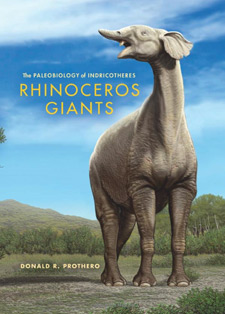by
Donald Prothero, Aug 20 2014
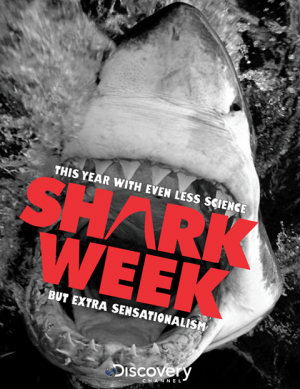
A year ago, I blogged about the decline of “Shark Week” on Discovery Channel. At that time, the normally documentary-filled week that was the channel’s biggest draw all year was beginning to show signs of “jumping the shark.” As I pointed out in previous posts, the deregulation of the airwaves in the late 1980s has led to a steady “network decay” of once reputable TV channels. When cable TV first expanded into hundreds of speciality channels, they were all dedicated to a core mission, whether it be golf or history or science. As TVTropes.com explains it, all of these deregulated cable networks had to please advertisers, and soon moved into reality shows and sensationalism to attract the core audience of 18-31 year old males that advertisers covet. Discovery Channel used to run almost non-stop documentary footage, and did fine like that for over a decade. As TVTropes.com puts it:
The Discovery Channel still shows plenty of actual documentary material, despite having been decaying for almost as long as MTV has. In the late 80s the lineup was mostly serious documentaries, the most famous of which was Wings (no relation to the sitcom except for a focus on aircraft) but which also included classy repackaged BBC imports like Making of a Continent — and once a year there was Shark Week, which was just what you’d expect. By the mid-1990s, they showed an obscene amount of home improvement shows and cooking shows aimed at stay-at-home moms (enough to spawn the spin-off Discovery Home & Leisure Channel, now Planet Green) and Wings had proven so popular it had been farmed out to its own spin-off, Discovery Wings Channel (now Military Channel). Now, they’re being swamped with “guys building and/or blowing things up” shows in the vein of MythBusters and Monster Garage. And about four different shows about ghost hunters. In 2005, Discovery debuted Cash Cab, a game show that takes place in the back of a cab, leaving one unsure whether it even has a theme beyond “non-fiction”. It gets weird when you realize that they’re knocking some of their own shows off, especially Mythbusters into Smash Lab (with a focus on safety measures) and How It’s Made into Some Assembly Required. The latter has almost only done products featured in the former (though How It’s Made has been on for just about ten years, so it’s hard to find something they haven’t done). The Discovery Channel also used to contain a lot of nature, which is where the now-classic Shark Week (which they still air regularly) originated from. But it seems that explosions have taken the place of tigers ripping stuff to pieces. Most of the nature shows have since been relegated to Animal Planet. Amusingly enough, despite the slippage over the years it remains the sole survivor of the educational channels on American cable television.
Continue reading…
comments (8)
by
Donald Prothero, Apr 09 2014
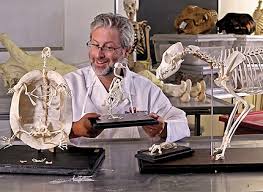
A review of Your Inner Fish, a three-part documentary series airing on PBS beginning on April 9, 2014
In 2008, Neil Shubin published his best-selling book, Your Inner Fish: A Journey into the 3.5-Billion Year History of the Human Body. Based on his experience teaching medical school anatomy at the University of Chicago, the book explored the evidence of our evolutionary past demonstrated in the peculiar jury-rigged anatomy of humans. Interspersed with the anatomical evidence of evolution were stories about his field work discovering important fossils that showed the transition from fish to amphibians (Tiktaalik), as well as other important finds. Shubin’s research is not only in anatomy and paleontology, but also in evolutionary developmental biology (“evo-devo”), so there were many stories in the book detailing the new discoveries in genetics that explain the oddball poorly-designed way we are constructed, and how these genetic mechanisms were inherited from our ancestors. The book was named “Best Book of the Year” by the National Academy of Sciences. After his earlier career at the University of Pennsylvania, Shubin is currently the Robert Bensley Distinguished Service Professor at the University of Chicago and Associate Dean for academic strategy of the university’s Biological Sciences Division. He was elected to the National Academy of Sciences in 2011. Continue reading…
comments (10)
by
Daniel Loxton, Mar 05 2014
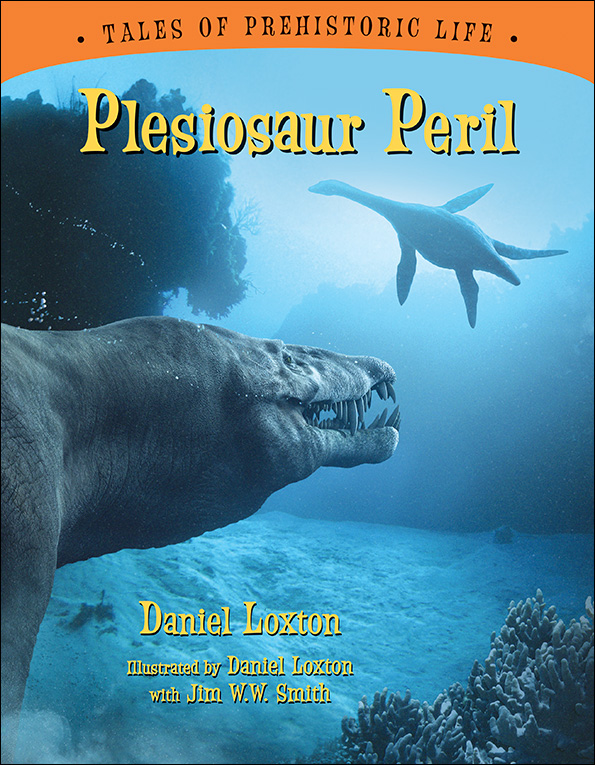
Whew! It’s always a wonderful and slightly dream-like experience to release a new book, and my latest paleofiction storybook Plesiosaur Peril is no exception. From signing a contract to holding the finished book in your hands, these things take years to bring to fruition. Sometimes it feels that they’ll never quite exist—and then poof, they’re out! It catches you by surprise.
Happily, despite my astonishment at this long-scheduled release, the book is now hitting stores (including Skeptic.com, Amazon.com, and Amazon.ca.).
Also gratifying, the first few Twitter reactions to Plesiosaur Peril seem quite positive:
Continue reading…
comments (3)
by
Donald Prothero, Feb 19 2014

Eager young VP students dance through the night at the after-meeting party. (Photo by R. Hunt-Foster).
Last November, the 73rd annual meeting of the Society of Vertebrate Paleontology (SVP) was held here in Los Angeles. SVP is my professional society, since my primary training and research is fossil vertebrates (especially fossil mammals like rhinos, peccaries, camels, horses, and others). My first SVP was the 1977 meeting, the last time it was held here in Los Angeles, when I was just a beginning graduate student. Since then, I’ve been to every meeting of SVP, a streak of 36 years in a row. It’s my lifeline, and I wouldn’t consider missing it for anything. Once a year I get to see all my closest professional friends and colleagues, people I spent months in the field with, former officemates from grad school, and find out the latest news about people I’ve known for 30 years or more. I also present my own research (I always do at least one presentation, and sometimes my name is on several more by my students), and I usually get to see my former students as they grow and thrive in their own careers. For five years (1999-2004), I was the Program Chair, running the entire meeting and producing (editing, typesetting, etc.) the abstract volume with over 600 individual abstracts. At that point, I couldn’t miss the meeting for anything, including my brother’s wedding (I told him in advance NOT to schedule it to conflict with SVP). Most importantly, I go each year to get some positive feedback and affirmation that my 40 years of research and scholarship is valued and means something to people who appreciate it. This is essential when you spend the other 51 weeks of the year in a hostile department where they don’t appreciate you and try to tear you down at every opportunity.
Continue reading…
comments (12)
by
Donald Prothero, Nov 06 2013
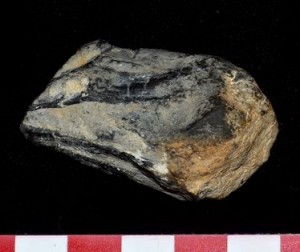
The alleged “fossil kraken beak” touted by McMenamin as the beak of the giant kraken responsible for arranging ichthyosaur bones into art. The scale is in centimeters, so it is only 5 cm long, too small to belong to any giant squid. In addition, the preservation and other details of the specimen do not resemble a cephalopod beak but some other rock or concretion.
Readers of this blog might remember a post two years ago, when I reported on the notorious crackpot paleontologist Mark McMenamin, and his claim that the ichthyosaur skeletons at Berlin-Ichthyosaur State Park in southwest Nevada were artistically arranged by some sort of huge “Kraken” squid. As I detailed in my post, the claim was laughably incompetent and ridiculous. McMenamin claimed that the arrangement of the vertebrae appeared to be deliberate, an arrangement satisfying the “artistic sense” of the giant squid. Clearly he does not know enough about the decay processes of vertebrate skeletons, which frequently leave the vertebral centra either lined up, or toppled over in rows just like we see in the Nevada ichthyosaurs. I vividly remember the buzz at the Geological Society of America (GSA) meeting in 2011, where McMenamin gave his presentation and people were openly laughing at its totally ridiculous claims—or not sure whether they were unwittingly part of an episode of “Punked” and Ashton Kutcher was going to pop out any moment. We all figured it was just another crazy idea by a notorious fringe scientist, and wrote it off to carelessness on the part of the committee that programmed the abstracts (they don’t really have the option of reviewing or rejecting them unless the abstract violates the basic formatting guidelines). The only sad consequence of this whole sordid episode is that the press and internet jumped all over this half-baked story, giving it all sorts of unwarranted coverage. As usual, the media don’t know (or don’t care) that meeting abstracts are unreviewed. They should not be given a lot of press coverage until they are peer reviewed and published. But in this age of 24/7 media coverage of junk, any sensational claim will make the news without any review or background checking or fact checking whatsoever—so McMenamin got his 15 minutes of fame for spewing junk science. Continue reading…
comments (3)
by
Donald Prothero, Aug 28 2013
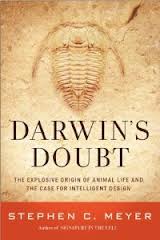
A review of Darwin’s Doubt: The Explosive Origin of Animal Life and the Case for Intelligent Design by Stephen Meyer (HarperCollins, New York, 498 pp.)
In everything the prudent acts with knowledge, but a fool flaunts his folly.
—Proverbs 13:16
Ignorance more frequently begets confidence than does knowledge.
—Charles Darwin, The Descent of Man
The fool doth think he is wise, but the wise man knows himself to be a fool.
—William Shakespeare, As You Like It
The Dunning-Kruger effect is a well-known phenomenon in psychology first named in 1998, but it has been recognized since before the Bible and Shakespeare. In a nutshell, it is (as Bertrand Russell put it)
”The trouble with the world is that the stupid are cocksure and the intelligent are full of doubt”. There is also another well-known psychological phenomenon: motivated reasoning. Our brains have many blind spots in them that allow us to reconcile the real world with the world as we want it to be, and reduce the clash of cognitive dissonance. The most familiar of these is confirmation bias, where we see only what we want to see, and ignore or forget anything that doesn’t fit our preferred world-view. When this bias emerges in argument, it takes the form of cherry-picking: finding a few facts out of context that seem to support what we want to believe, and ignoring everything else that contradicts what we are trying to promote.
The entire literature of creationism (and of its recent offspring, “intelligent design” creationism) works entirely on that principle: they don’t like any science that disagrees with their view of religion, so they pick tiny bits out of context that seem to support what they want to believe, and cherry-pick individual cases which fits their bias. In their writings, they are legendary for “quote-mining”: taking a quote out of context to mean the exact opposite of what the author clearly intended (sometimes unintentionally, but often deliberately and maliciously). They either cannot understand the scientific meaning of many fields from genetics to paleontology to geochronology, or their bias filters out all but tiny bits of a research subject that seems to comfort them, and they ignore all the rest. Continue reading…
comments (4)
by
Donald Prothero, Jul 03 2013
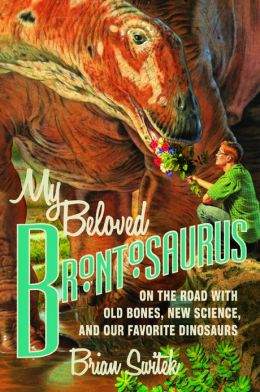
A Review of My Beloved Brontosaurus: On the Road with Old Bones, New Science, and Our Favorite Dinosaurs
by Brian Switek
(Scientific American/Farrar Straus Giroux, New York, 256 pp., 2013)
The dino-bug is now pervasive in American culture, so that kids between the ages of 4 and 12 are nearly all bitten by it. Most kids can name dozens of those tongue-twisting dinosaur names, and are full of all sorts of dino-trivia and tidbits. Dino-mania is a huge business, with millions of dollars being made in marketing books, toys, geegaws, and all sorts of dino-paraphernalia (none of that money, by the way, goes to support paleontology or dinosaur research). It was not always so: when I grew up in the 1950s, there was very little interest in dinosaurs, very few decent books or toys, and I was considered a freak in my elementary school because I knew so much about prehistoric life.
However, when those hormones kick in and the teen years begin, most kids lose their interest in dinosaurs or science, and move to interests in the opposite sex, along with being cool and hip to the trappings of teen culture. Some, like myself and most vertebrate paleontologists I know, never outgrow our love of dinosaurs, and were determined to become paleontologists. Most did not survive the brutal job market, where fewer than 20% of the Ph.D.s in paleontology get any kind of job remotely related to their training (mostly teaching in small colleges, or in medical school anatomy posts). Very few get to occupy the prime positions in the major museums and top universities (there are no more than 50 such jobs in the entire United States, and they are vanishing). Continue reading…
comments (3)
by
Donald Prothero, May 29 2013
As the largest land mammal that has ever lived, there is much fascination with maximum body size and weight estimates for extinct indricotheres. Most often you see sources parroting each other around a common estimate of 20 metric tonnes (20,000 kg), although Alexander (1989) estimated 34 tonnes and Savage and Long (1986) quoted 30 tonnes. Prothero and Schoch (2002) followed Alexander (1989) and used the number of 34 tonnes, and there have been a wide range of estimates all over this range. As Fortelius and Kappelman (1993) showed, these estimates came from some questionable assumptions and extrapolations by Osborn, Granger, and Gregory based on their partial skeleton. That skeletal reconstruction is a composite, a chimaera based on bones from individuals of at least four different size classes, so it is not a very reliable source for the body size of an actual animal.
Most of the weight estimates are based on the combined head and body length (HBL) of the animal, which may be exaggerated if Granger and Gregory’s (1935, 1936) reconstruction drawn by Helen Ziska is inaccurate. As Fortelius and Kappelman (1993, Table 1) showed, different authors estimated a wide range of HBL values, from Gromova’s estimate of 740 cm, to Granger and Gregory’s (1936) maximum of 870 cm, which drops to 621 cm if you use just the smallest individuals. Using the weight equations of Damuth (1990) for converting HBL to mass, this gives weight estimates from as low as 8.4 tonnes (in the smallest specimens) to 24 tonnes in the largest specimens. Continue reading…
comments (2)
by
Donald Prothero, May 15 2013
When I started my graduate career at the American Museum of Natural History in New York in 1976, I soon realized that I had stumbled upon an incredible opportunity. In addition to the world-famous fossil halls that have amazed generations of visitors, there are at least a hundred times as many fossils stored in research collections for study by qualified scientists. This is where the real work of paleontology takes place: specialists dedicated to the study of one group of organisms spending weeks to months to years examining every fossil in the collection, trying to reconstruct their anatomy, determine their relationships, and decipher what is the correct taxonomic name for any group of specimens. Without this fundamental work determining which species are valid, and when and where they lived, all other work in paleontology (especially computer models which are based on counting taxa studied by others and compiling them into databases) is “garbage in, garbage out.”
The American Museum is particularly important for such research, because it has the original collections of pioneering paleontologist Edward Drinker Cope, collected from the 1870s and 1880s, plus the huge numbers of fossils accumulated by its legendary paleontologists from 1895-1935 (Henry Fairfield Osborn, William Diller Matthew, Walter Granger, and others), as well as later collections obtained by the most brilliant paleontologist of the twentieth century, George Gaylord Simpson. The collections of dinosaurs, other reptiles, birds, amphibians, fish, and other vertebrates huge, but they are all outstripped by the gigantic collection of (mainly North American) fossil mammals. In the 1920s, the millionaire Childs Frick (son of the robber baron Henry Clay Frick, Andrew Carnegie’s partner) became interested in the origin of the mammals he used to shoot on big-game hunts. Starting about 1930 and for the next 35 years he used his wealth to pay for field crews to work year-round in the important fossil beds of the western United States, making giant collections from key localities and finding many more localities. Consequently, where we used to have just isolated teeth and jaws and maybe a skull of most mammals, the Frick Collection usually has many complete skulls or skeletons. This allows a paleontologist to see the complete anatomy of a particular mammal, examine variability within a population, and determine a much more informed and modern classification of names that had been based on isolated scraps of teeth described a century ago. Thus, most of the major groups of North American fossil mammals have to be completely restudied using the huge Frick Collection before we can make any conclusions about how many species existed, and when and where they lived. Continue reading…
comments (5)
by
Donald Prothero, Apr 10 2013
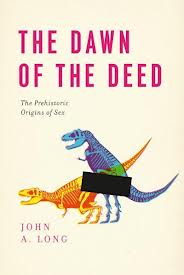
A review of The Dawn of the Deed: The Prehistoric Origins of Sex, by John A. Long (University of Chicago Press, Chicago, 2012).
As I mentioned in last week’s post, we all know that subjects like sex and dinosaurs are guaranteed to get the public’s attention and interest, no matter what story you want to promote. Paleontologist and author Dr. John A. Long (formerly the Vice-President of Research and Collections at the Natural History Museum of Los Angeles County, but now back home in Australia as the Strategic Professor in Palaeontology at Flinders University in Adelaide) has cleverly woven a story about the wild sex lives of the animals kingdom as a hook to talk about his own research into the fossil fish (especially an extinct group called placoderms), which show the first evidence of internal fertilization, the oldest known vertebrate embryos, and the first copulatory structures.
One would think that a story about small extinct placoderms in nodules from the deserts of Western Australia would be a hard sell for a popular book, but Long pulls off the feat with aplomb. The heart of the book is filled with Long’s excitement about this research as he finds and uncovers these amazingly 3D fish fossils from the nodules of the Gogo beds, then compares them with fossils described from collections elsewhere in the world. He soon discovers that mysterious structures that were misidentified or ignored by previous fish paleontologists are actually pelvic claspers (long rodlike structures also found in the pelvic fins of modern sharks to aid them in copulation with females). Then he and his colleagues discover traces of tiny bones inside an adult placoderm that were misidentified as their last meal, but turn out to be embryos. We follow Long’s story as he works on this research until is it is accepted to be published in top journals like Nature. The discovery gets global coverage, and Long even takes part in big media events with a live uplink between the announcement in Australia and Queen Elizabeth of England (in a chapter called “Announcing Fossil Sex to the Queen”). Continue reading…
comments (2)








